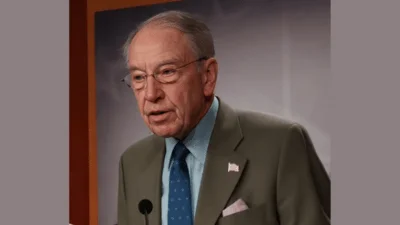Embattled U.S. Transportation Secretary Pete Buttigieg said in a social media post last week that he's "happy" to talk about timing of his then-upcoming visit to a toxic Ohio derailment site, but won't bow to distractions that he says "some in Washington" want.
Buttigieg's Twitter post came Wednesday, Feb. 22, the day before his visit to the derailment site.
"Happy to discuss timing of our Ohio visit – but starting to think some in Washington want that to be the main focus so that there aren’t too many questions about rail safety regulation, who is for and who is against," Buttigieg said. "We will hold the line on railroad safety and accountability."

Florida Republican U.S. Sen. Marco Rubio
| rubio.senate.gov/
Six days prior to Buttigieg's Twitter post, U.S. Sen. Marco Rubio (R-Fla.) sent an open letter to President Joe Biden calling for Buttigieg's resignation.
"For two years, Secretary Buttigieg downplayed and ignored crisis after crisis while prioritizing topics of little relevance to our nation's transportation system," Rubio said in his letter to Biden. "It is painfully clear to the American people that Secretary Buttigieg has little regard for the duties of the Secretary of Transportation."
A Twitter feud between Rubio and Buttigieg has been ongoing and reported by news outlets worldwide, including Politico.
The day after Buttigieg's Twitter post and 20 days after the Norfolk Southern derailment in East Palestine, Ohio, Buttigieg visited the derailment site.
"This morning I'm in East Palestine, Ohio, to see the site of the Norfolk Southern derailment, hear updates from investigators, and meet first responders," Buttigieg said in a Twitter post that day. "USDOT will continue its work to ensure safety and accountability."
That same day, the National Transportation Safety Board issued it preliminary report that said the Norfolk Southern train included 20 hazardous materials tank cars, including those carrying combustible and flammable gas, such as vinyl chloride. The report found the train had been traveling at 47 mph, below the maximum authorized speed of 50 mph, and was equipped with a positive train control system.
An audible alarm sounded as the train passed a hot bearing detector, prompting the crew to slow down and inspect a hot axle. While decelerating, an automatic emergency brake application occurred, bringing the train to a stop. Train 32N had passed three hot bearing detectors before the derailment, and the suspect bearing's temperature had risen to 253°F above ambient temperature, exceeding the critical threshold of 200°F.








